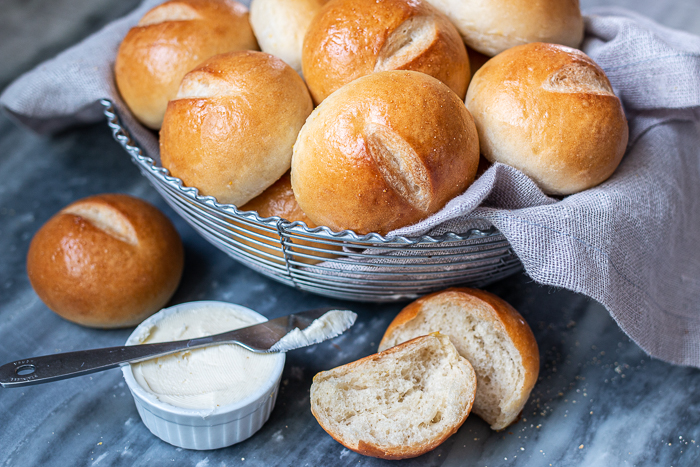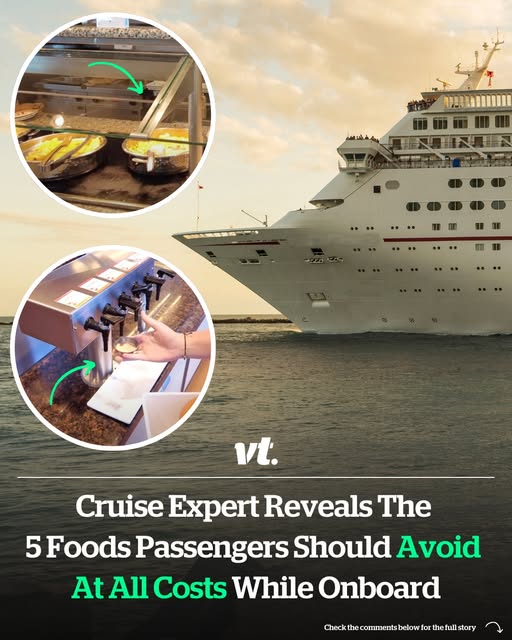Embarking on a cruise offers an abundance of culinary delights, with endless buffets and diverse dining options. However, not all onboard foods are created equal. Angie Vognild, a seasoned cruise expert and host of the Cruise Blog YouTube channel, has identified five specific foods that passengers should approach with caution to ensure a safe and enjoyable voyage.
1. Communal Condiments: A Hidden Germ Haven
Buffet-style dining often features large dispensers of condiments such as ketchup, mustard, and mayonnaise for communal use. While convenient, these shared containers can become breeding grounds for bacteria. Despite recommendations for passengers to wash their hands before entering the buffet, compliance varies, leading to potential contamination of these dispensers. Moreover, condiments left unrefrigerated for extended periods, especially in warm climates, may harbor harmful pathogens. To mitigate risks, it’s advisable to use single-serving condiment packets or request freshly provided condiments from the kitchen.
2. Tap Water: A Potential Source of Contamination
While cruise lines adhere to stringent water safety regulations, the quality of tap water can vary, particularly when the ship is docked in ports with differing sanitation standards. Consuming contaminated water can lead to illnesses such as norovirus, which spreads rapidly in communal environments. To stay hydrated safely, passengers should opt for bottled water or use refillable bottles filled with the ship’s purified water.

3. Scrambled Eggs: Powdered Alternatives May Disappoint
Scrambled eggs are a breakfast staple on many cruise ships. However, they are often prepared using powdered eggs due to ease of storage and mass preparation. This can result in a texture and flavor that some passengers find unappealing. For a fresher and more satisfying experience, consider visiting the made-to-order omelet station, where eggs are cooked to your preference using fresh ingredients.
4. Soft-Serve Ice Cream: Self-Serve Stations Pose Hygiene Risks
Unlimited soft-serve ice cream is a tempting treat on cruises. However, self-serve machines are handled by numerous passengers throughout the day, increasing the risk of germ transmission. To minimize exposure, use a napkin or tissue when operating the machine, or opt for pre-portioned desserts served by staff members.
5. Dinner Rolls: Filling Up Before the Main Course
While a basket of warm dinner rolls is an inviting start to a meal, indulging too much can lead to overeating and discomfort, potentially diminishing your appetite for the main courses. Enjoying a roll or two is fine, but be mindful to save room for the diverse and delectable dishes that follow.

Additional Considerations for Onboard Dining
Beyond the five foods highlighted by Angie, other items warrant caution:
- Buffet Sushi: Sushi offered at buffets may have been sitting out for extended periods, raising concerns about freshness and safety. It’s advisable to consume sushi from venues where it’s prepared fresh upon order.
- Deli Meats: Cold cuts and sliced deli meats can be susceptible to bacterial growth if not stored properly. Opting for freshly prepared alternatives can reduce the risk of foodborne illnesses.
- Excessive Alcohol: While enjoying alcoholic beverages is part of the cruise experience for many, overconsumption can lead to dehydration and other health issues. Drinking in moderation ensures a more pleasant and safe journey.
Conclusion
A cruise vacation offers a plethora of dining experiences, but mindful choices are essential to maintain health and enjoyment. By being cautious with communal condiments, opting for safe drinking water, choosing freshly prepared eggs, handling self-serve items with care, and moderating bread consumption, passengers can significantly reduce the risk of foodborne illnesses. Staying informed and making prudent dining decisions will contribute to a memorable and delightful cruise experience.

















